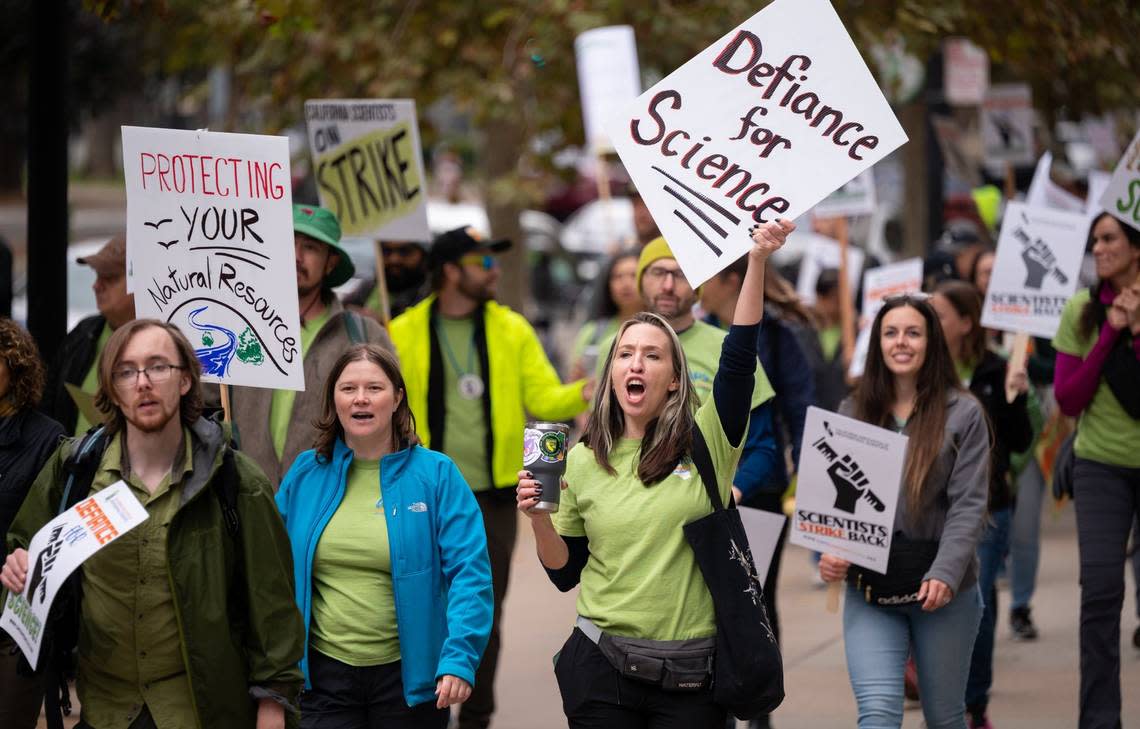What is a ‘last, best and final offer,’ and why did California state scientists reject it?

Get The State Worker Bee newsletter in your inbox every Wednesday
This is a preview of our weekly state worker newsletter. Subscribers receive more exclusive tidbits like this one, as well as a weekly roundup of all our state worker coverage. Sign up using the form linked here, or by emailing mmiller@sacbee.com.
More strikes could be on the way for thousands of California state scientists now that they’ve rejected Gov. Gavin Newsom’s final wage hike proposal.
CalHR, Newsom’s representative at the bargaining table, presented its “last, best and final offer” to the California Association of Professional Scientists the week before Christmas. The raises presented in the final offer mirror those proposed last February — an offer that the union’s membership voted down by a healthy margin.
On Dec. 21, CAPS members again said “no,” marking only the second time a state employee union has rejected a last, best and final offer, also known as an LBFO. The first time was nearly 15 years ago when the state’s prison guard union rejected a final offer under former Gov. Arnold Schwarzenegger.
Negotiations that started three years ago will now leak into a budget season in which Newsom’s administration faces a historic deficit, currently projected at $68 billion.
CAPS President Jacqueline Tkac did not immediately respond to request for comment.
CalHR spokesperson Camille Travis said the state is “disappointed” that CAPS rejected its final offer and further negotiations have been suspended.
“In these uncertain economic times, an agreement would achieve important gains for both the State and the employees,” she wrote.
What happens next depends largely on CalHR and the Legislature, according to Christiana Dominguez, CAPS’s lead legal counsel.
Under the Ralph C. Dills Act, when the state presents a union with its last, best and final offer, the union can either take it all or leave it all — no more negotiating. CalHR can then choose to implement any or all provisions of the offer. Until that point, state scientists are still in limbo.
“CalHR could say that they’re implementing raises, but when CAPS would actually get those raises depends largely on the Legislature,” Dominguez said. “The Legislature is still going to need to approve anything with a price tag.”
Dominguez points out that there are other provisions in the LBFO that don’t cost money, which CalHR could choose to implement as soon as it wants to.
“There aren’t a lot of precedential decisions to point to here,” Dominguez said.
Travis wrote that CalHR “will be in communication with CAPS” about next steps.
Also muddying the waters is a pending case before the Public Employment Relations Board.
PERB is still mulling over CalHR’s formal protest to the historic three-day strike CAPS staged in November. The board issued a complaint to CAPS that still needs to be resolved.
But Dominguez argues that any future labor actions are most certainly legal now that the state has issued, and the scientists have rejected, its final offer. (She strongly disagrees with CalHR’s assertion that the November strikes were premature.)
“If I were CalHR now, I would imagine that I’d have a much harder time justifying that any strike activity from this point onward would be unlawful,” Dominguez said.
“CalHR was grasping for straws in November. There aren’t any straws left now.”
Want state worker news in your inbox? Sign up for our weekly newsletter using the module below or by emailing mmiller@sacbee.com.

